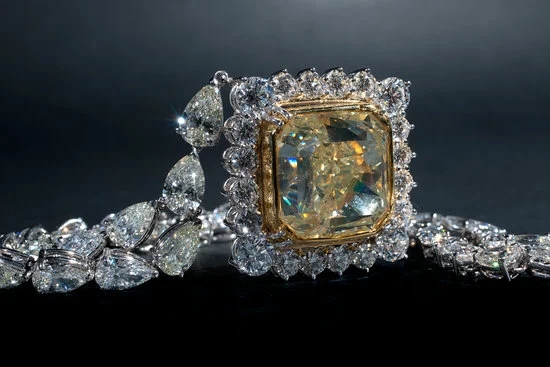Gold filled jewelry is a popular and affordable alternative to solid gold jewelry, but many people wonder: will gold filled jewelry tarnish? In this comprehensive guide, we will explore the intricacies of gold filled jewelry, including how it is made, what tarnishing is, and the factors that can affect its susceptibility to tarnishing. We will also provide tips and techniques for preventing tarnishing and offer insights on how to care for gold filled jewelry to maintain its luster over time.
Gold filled jewelry is made by bonding a layer of solid gold to a base metal such as brass or sterling silver. This process creates a durable and high-quality piece of jewelry that is more affordable than solid gold. It differs from other types of gold-plated or vermeil jewelry in that the layer of gold in gold filled jewelry is thicker, making it more resistant to tarnishing and wear.
Understanding what tarnishing is and how it affects different types of jewelry is crucial when considering the purchase of gold filled jewelry. Tarnishing occurs when the surface of the metal reacts with elements in the environment, such as oxygen or sulfur, causing discoloration or dullness. While all metals are susceptible to tarnishing to some degree, proper care and maintenance can significantly reduce this effect on gold filled jewelry.
How Is Gold Filled Jewelry Made?
Gold filled jewelry is made using a process that involves bonding a layer of gold with another metal, usually through heat and pressure. This results in a thick layer of gold being permanently bonded to the base metal, creating a durable and long-lasting piece of jewelry. Here’s a detailed breakdown of how gold filled jewelry is made:
1. Base Metal Selection: The first step in making gold filled jewelry is selecting the base metal that will be used as the core of the piece. Common metals used for this purpose include brass, copper, or sterling silver.
2. Bonding Process: Once the base metal is selected, it is thoroughly cleaned to ensure that it is free from any dirt, oil, or contaminants. The clean base metal is then heated and immersed in a solution containing gold. Through a combination of heat and pressure, the gold layer fuses to the base metal.
3. Thickness of Gold Layer: In order to be considered gold filled, the layer of gold bonded to the base metal must be at least 5% of the total weight of the item. Typically, gold filled jewelry contains significantly more gold than other types of plated jewelry, making it much more valuable and longer lasting.
4. Finishing Touches: After the bonding process is complete, the newly formed gold filled material can be shaped into various types of jewelry such as rings, necklaces, bracelets or earrings. It can also be polished and finished to achieve desired colors and textures.
Overall the creation process results in high-quality jewelry that boasts durability and resistance to tarnishing, making it a popular choice for those seeking affordable yet elegant pieces.
Understanding Tarnishing
What Is Tarnishing?
Tarnishing is a natural process that occurs in metals, including gold filled jewelry, due to various environmental and chemical factors. It refers to the discoloration or dulling of the metal’s surface, often resulting in a less lustrous appearance. Tarnishing can be caused by exposure to air, moisture, certain chemicals, and even skin oils, leading to the deterioration of the metal over time.
Tarnishing and Gold Filled Jewelry
When it comes to gold filled jewelry, tarnishing is a common concern for many wearers. While this type of jewelry is known for its durability and resistance to tarnishing compared to other types of gold-plated jewelry, it is still susceptible to tarnish under certain conditions. The outer layer of gold in gold filled jewelry can eventually wear off with regular use and exposure to elements, leading to potential tarnishing of the underlying metal.
Preventing Tarnishing
To prevent tarnishing of gold filled jewelry, proper care and maintenance are essential. Storing your pieces in airtight containers or bags when not in use can help minimize exposure to air and moisture.
Additionally, avoiding contact with harsh chemicals such as perfumes, lotions, or cleaning agents can also help prolong the luster of gold filled jewelry. Regular cleaning using mild soap and water followed by gentle polishing with a soft cloth can further prevent tarnish buildup on the surface of the jewelry.
With an understanding of what tarnishing is and how it affects gold filled jewelry specifically, taking proactive steps to prevent tarnish buildup can help maintain the beauty and longevity of your cherished pieces.
Factors Affecting Tarnishing
Several factors can contribute to the tarnishing of gold filled jewelry, including its exposure to certain elements and chemicals. One common cause of tarnishing is the jewelry’s contact with substances such as perfume, lotion, or even sweat, which can cause a chemical reaction that leads to discoloration. Additionally, environmental factors such as high humidity and air pollutants can also accelerate the tarnishing process of gold filled jewelry.
Another factor that can affect the tarnishing of gold filled jewelry is improper storage. Storing your jewelry in a humid environment or leaving it exposed to the open air for extended periods can increase the likelihood of tarnishing. Furthermore, storing gold filled jewelry alongside other metals, such as silver or copper, can result in chemical reactions that speed up the tarnishing process.
It’s important to note that individual body chemistry can also play a role in how quickly gold filled jewelry tarnishes. The pH level of a person’s skin and their overall body chemistry can impact the rate at which their jewelry tarnishes. Factors such as diet and lifestyle choices may influence this as well. Understanding these various factors is crucial in taking proactive measures to prevent the tarnishing of your gold filled jewelry.
Preventing Tarnishing
Gold filled jewelry is made by bonding gold to a base metal through extreme pressure and heat. This process creates a thicker layer of gold compared to other types of gold-plated jewelry, making it more durable and less likely to tarnish. The layer of gold in gold filled jewelry is typically 5% or 1/20th of the total material, making it an affordable alternative to solid gold.
While pure gold does not tarnish, the base metal used in gold filled jewelry can react with certain elements such as sulfur or oxygen, causing the jewelry to develop a patina over time. However, proper care and storage can significantly reduce the likelihood of tarnishing. Keeping gold filled jewelry away from harsh chemicals, moisture, and extreme temperatures will help to preserve its appearance and reduce the risk of tarnishing.
To prevent tarnishing of gold filled jewelry, it is important to avoid exposing it to substances that can accelerate the oxidation process. When not being worn, store your gold filled pieces in airtight containers or bags to protect them from moisture and air exposure. Additionally, regularly cleaning your gold filled jewelry with a soft cloth can help remove any buildup that could lead to tarnishing over time.
| Preventing Tarnishing | Gold Filled Jewelry Care Tips |
|---|---|
| Avoid exposure to harsh chemicals | Store in airtight containers |
| Avoid exposure to moisture and extreme temperatures | Regularly clean with a soft cloth |
Does Gold Filled Jewelry Tarnish?
Gold filled jewelry has become increasingly popular in recent years due to its affordability and durability. But many jewelry enthusiasts wonder, “Will gold filled jewelry tarnish?” The answer is, yes, it can tarnish over time if not properly cared for. However, there are several factors that come into play when determining the likelihood of tarnishing, including the quality of the gold fill, how the jewelry is worn and stored, and how well it is maintained.
So what exactly is gold filled jewelry? Gold filled jewelry is made by bonding a layer of gold onto a base metal such as brass or copper.
This results in a thicker layer of gold than gold plated jewelry, making it more resistant to tarnishing and wear. The process involves heat and pressure to create a solid bond between the two metals, resulting in a piece of jewelry that looks like solid gold but at a much more affordable price point.
To prevent tarnishing of your gold filled jewelry, proper care and maintenance are essential. Here are some tips to help keep your pieces looking their best:
- Store your gold filled jewelry in a dry and air-tight container when not in use
- Avoid exposing your jewelry to harsh chemicals such as chlorine or perfume
- Remove your jewelry before swimming or engaging in activities that could cause it to come into contact with abrasive materials
By following these simple tips and taking good care of your gold-filled pieces, you can minimize the risk of tarnishing and ensure that they remain beautiful for years to come.
How to Care for Gold Filled Jewelry
Gold filled jewelry is a popular and affordable alternative to solid gold jewelry, but like any other type of jewelry, it requires proper care to maintain its appearance and longevity. To prevent tarnishing and keep your gold filled jewelry looking its best, there are a few key practices you can implement.
One of the most important steps in caring for gold filled jewelry is proper storage. When not being worn, store your gold filled pieces in a dry and air-tight container or bag to protect them from exposure to moisture, which can cause tarnishing. Additionally, keep your gold filled jewelry away from direct sunlight and extreme temperatures, as these conditions can also contribute to tarnishing.
Regular cleaning is also essential in caring for gold filled jewelry. To clean your pieces, use mild soap and water with a soft cloth or brush to gently remove any dirt or residue. Avoid using harsh chemicals or abrasive materials, as these can damage the thin layer of gold on the surface of the jewelry. After cleaning, be sure to thoroughly dry the pieces before storing them.
It’s worth noting that while gold filled jewelry is more resistant to tarnishing compared to other types of gold-plated jewelry, it is not completely immune. Factors such as exposure to certain chemicals, sweat, and oils from the skin can still cause tarnishing over time if not properly cared for. By following these simple care tips, you will greatly reduce the likelihood of tarnishing and extend the lifespan of your gold filled jewelry.
Gold Filled Jewelry vs Other Types of Gold Jewelry
Gold Filled vs Gold Plated
Gold filled jewelry and gold plated jewelry are often confused with each other, but they are actually quite different. Gold filled jewelry is made by bonding a layer of gold to a base metal using heat and pressure, while gold plated jewelry involves a thin layer of gold that is electrically bonded to the base metal. This fundamental difference means that gold filled jewelry is much more durable and long-lasting compared to gold plated jewelry.
Gold Filled vs Solid Gold
Solid gold jewelry is made entirely of gold, whereas gold filled jewelry consists of a thick layer of gold bonded to a base metal. While solid gold is more valuable and resistant to tarnishing, it is also significantly more expensive. On the other hand, gold filled jewelry offers a more affordable option without compromising on quality and durability. Both types of jewelry require proper care and maintenance to prevent tarnishing, but solid gold may require less frequent cleaning and polishing.
Tarnishing Comparison
When comparing the tarnishing of different types of gold jewelry, it’s important to consider factors such as contact with chemicals, exposure to moisture, and individual body chemistry. While both solid gold and gold filled jewelry can tarnish under certain conditions, proper care can minimize or prevent tarnishing for both types. It’s important to note that even high-quality solid gold can tarnish over time if not properly cared for.
Conclusion
In conclusion, the question “will gold filled jewelry tarnish?” has been thoroughly explored in this article. We have learned that while gold filled jewelry is less likely to tarnish compared to other types of gold jewelry, it is not completely immune to tarnishing. Factors such as exposure to certain chemicals and environments can still cause gold filled jewelry to tarnish over time. However, with proper care and maintenance, tarnishing can be minimized or prevented altogether.
It is crucial to follow the tips and techniques provided in this article for preventing tarnishing of gold filled jewelry. Proper storage in a dry environment, regular cleaning, and avoiding contact with harsh chemicals are all essential for maintaining the appearance and longevity of your gold filled jewelry. By taking these precautions, you can ensure that your gold filled jewelry remains lustrous and beautiful for years to come.
In addition, it is important to note that while gold filled jewelry may be more resistant to tarnishing than other types of gold jewelry, it still requires gentle care and attention. By understanding how to properly care for your gold filled jewelry and being mindful of the factors that can cause tarnishing, you can enjoy wearing your pieces without having to worry about them losing their shine.
Frequently Asked Questions
How Long Does Gold-Filled Jewelry Last?
Gold-filled jewelry can last a lifetime with proper care and maintenance. The amount of gold in the jewelry is significantly higher than in gold-plated pieces, making it more durable and long-lasting. With regular cleaning and avoiding contact with harsh chemicals, gold-filled jewelry can maintain its beauty and quality for many years.
Can You Shower With Gold-Filled Jewelry?
While gold-filled jewelry is more resistant to tarnishing and discoloration compared to other types of jewelry, it is not recommended to shower with it on a regular basis. Exposure to soaps, shampoos, and other bath products can affect the appearance and integrity of the jewelry over time.
It’s best to remove gold-filled jewelry before showering or swimming to prolong its lifespan.
Is Gold-Filled Jewelry Good for Everyday Wear?
Gold-filled jewelry is a great choice for everyday wear due to its durability and longevity. It can withstand the rigors of daily activities better than gold-plated or costume jewelry.
Whether it’s worn at work, during leisure time, or special occasions, gold-filled jewelry can maintain its luster and appeal with proper care. However, it’s important to avoid exposing it to harsh chemicals or rough handling to ensure it continues looking its best for years to come.

Welcome to my jewelry blog! My name is Sarah and I am the owner of this blog.
I love making jewelry and sharing my creations with others.
So whether you’re someone who loves wearing jewelry yourself or simply enjoys learning about it, be sure to check out my blog for insightful posts on everything related to this exciting topic!





